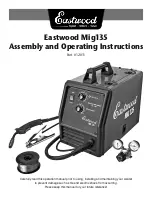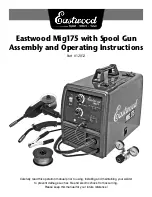
7
Trouble Conditions
[
∗∗∗∗∗
]+[2]
The PC2525 continuously monitors a number of trouble conditions. If one of these conditions occurs, the keypad
“Trouble” light will come ON and the buzzer will sound 2 short beeps every 10 seconds. To silence the buzzer,
press the [#] key. The buzzer will stop but the “Trouble” light will remain ON until the trouble condition is cleared.
Refer to Programming Sections [39] and [40] for information on the trouble conditions that can be transmitted to
the monitoring station.
To view the trouble condition, press [
∗
][2].
1 Low Battery.
If the battery voltage is low, the battery is disconnected or the battery fuse is blown, a trouble
will be displayed and can be reported. Only one low battery trouble and restoral transmission will occur per
armed period. The low battery trouble display is “latching”, and can only be cleared by correcting the
problem with the battery.
2 AC Failure.
On loss of AC power, the “Trouble” light will come ON immediately, but the keypad buzzer will
not sound. The keypad buzzer will sound if AC power remains off and the battery reaches a low voltage.
The delay before transmitting AC Fail can be programmed from 1 to 99 minutes. See Programming Section
[42].
3 Not Used
4 Telephone Line Trouble
If the system detects trouble on the telephone line, this condition will be indicated
5 Failure to Communicate
If the digital communicator is unsuccessful at communicating with the monitoring
station after 8 attempts at each phone number that is tried, a trouble is generated. If a later attempt at
communication is successful, the trouble is cleared. The trouble can also be cleared by pressing the [#] key
to exit from the trouble view mode.
6 Bell Circuit Trouble
If the Bell fuse is open or the bell is disconnected, this condition will be indicated.
7 Fire Alarm Circuit Trouble
An open circuit on any zone programmed as a fire zone will initiate a trouble.
8 Loss of Time on System Clock
When the PC2525 is powered up or reset, the internal time of day clock
needs to be reset to the correct time. The trouble is cleared after entering the trouble view mode then
pressing [#] to exit. The trouble will also be cleared on any attempt to set the time of day. Refer to [
∗
][6]
User Function Commands for information on setting the clock. Press [#] to return to Ready.
NOTE:
A trouble
will not be generated if both the test transmission and Auto-Arm times are not programmed with valid times.
NOTE:
If [9] is pressed while in the trouble display mode, the most recent trouble will be displayed on the
Zone Lights. This trouble memory is most useful as a diagnostic tool when installing and servicing the
PC2525. Press [#] to return to “Ready”.
Alarm Memory
[
∗∗∗∗∗
]+[3]
Alarms caused during the previous armed period are stored in memory. To view these alarms, press [
∗
] then [3].
The “Memory” light will flash and the alarm(s) will be displayed on the flashing Zone Lights.
In addition to the last alarm memory, there are two history levels. After entering the memory mode, pressing the
[9] key to display the two levels of alarm history. Each time a key is pressed, the keypad will beep 1, 2 or 3 times
to indicate which level of history is being viewed.
When the panel is armed, and if there is an alarm in the First level, the First level is cleared and the contents
moved to the Second level. The Second level contents are moved to the 3rd level and the 3rd level contents are
discarded. The “Memory” light will be ON only if there was an alarm during the previous armed period. Press [#]
to return to Ready.
Door Chime ON / OFF Command
[
∗∗∗∗∗
]+[4]
The Door Chime feature is used to sound a tone from the keypad whenever a zone programmed as a Chime type
is activated. When the Door Chime feature is turned ON, the keypad will beep several times whenever a Chime
zone is activated. To turn the feature on or off, enter [
∗
][4]. If the feature is being turned on, the keypad will
beep several times. If the feature is being turned OFF, the keypad will sound a single long tone.












































